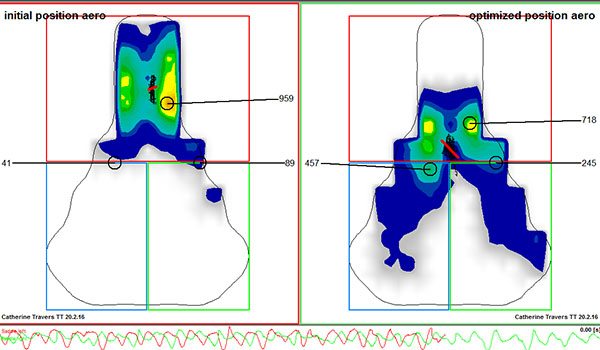Questions for the running physio: “I have flat (pronated) feet hence, I need supportive shoes to reduce my risk of injury”
by Dan Davis, Running Physiotherapist, Exercise Scientist, Elite Triathlete, Marathon Runner, Track Runner. Star Physio
Pronation (or feet that ‘roll in’) has somewhat traditionally been attributed to injury risk, hence the popularity within the running shoe world of ‘supp ortive’ categories of footwear that boast features such as a ‘stiffer mid-foot bridge’ and ‘medial posting’. However, is an absence of strong literature (i.e. good scientific studies) to support this thought process. In fact, one well designed prospective study found that injury risk was actually lower in subjects with a fair amount of apparent pronation (7-10O to be precise). Whilst this study alone is not conclusive to therefore assume more ‘pronated’ or ‘flatter’ feet have a lower injury risk, it adds strength to the argument that perhaps prescribing footwear that seems to ‘correct’ or reduce the movement of pronation may not be as valid as we think.
ortive’ categories of footwear that boast features such as a ‘stiffer mid-foot bridge’ and ‘medial posting’. However, is an absence of strong literature (i.e. good scientific studies) to support this thought process. In fact, one well designed prospective study found that injury risk was actually lower in subjects with a fair amount of apparent pronation (7-10O to be precise). Whilst this study alone is not conclusive to therefore assume more ‘pronated’ or ‘flatter’ feet have a lower injury risk, it adds strength to the argument that perhaps prescribing footwear that seems to ‘correct’ or reduce the movement of pronation may not be as valid as we think.
Did you know that World Marathon Record Holder Haile Gebrselassie is a classic overpronator? Check out these pics and see if you think “overpronation is a problem for him! 
However, when taking into account these ‘discrepancies’ in the literature and indeed before jumping to any potentially irrational conclusions, it’s important to consider the context in which a shoe is being prescribed. For example, there is good evidence to show that some types of supportive footwear can alter loading patterns in the feet, something which is particularly useful in the presence of certain pathologies or in the context of injury management.
As expert running physiotherapists in Western Australia, our aim is to be across the latest literature and evidence and to wade through the vast amount of advertising and social media rubbish, so that we can help you make smart choices with your pain and injuries, training and choice of running shoes.
In summary, in answer to this question, a ‘supportive’ shoe may not necessarily be the ‘best’ shoe in every context to reduce the risk of injury. If you’re currently managing an injury or looking to take the next (or first!) step in your running ventures book in to see either myself or one of our other expert team members at Star Physio in West Perth, Mosman Park or our CBD Office to help get you moving in the right direction.

Saddle pain while cycling! Stop putting up with it today!
You don't have to put up with saddle pain while cycling! Bikefit for saddle pain @Star Physio using GebioMized Pressure Analysis Technology. Star Physio’s staff have been fitting cyclists to find their optimal position for over 20 years. In the last...

Bikefit @ Star Physio with Ultra Endurance Cyclist Jack “Cycles Far” Thompson
If you haven't been following the adventures of Jack "Cycles Far" Thompson, you should be! Check out his crazy cycling challenges and amazing destinations via his webpage https://www.jackcyclesfar.com/ Jack has been a long time client of Star...

Lower back pain treatment without drugs and surgery
Are you suffering from back pain or neck pain? Have you been advised to have scans or x-rays? Have you been told you need to rest because of your pain? In the past, health professionals believed that pain was a sign of damage, and that if you had pain it was important...

Post-Op Rehab for Seniors
Surgical procedures for the elderly are becoming more common, especially knee replacement and hip replacement operations. While people are staying fitter and active for longer than they used to, the aches and pains of growing older are still a...

